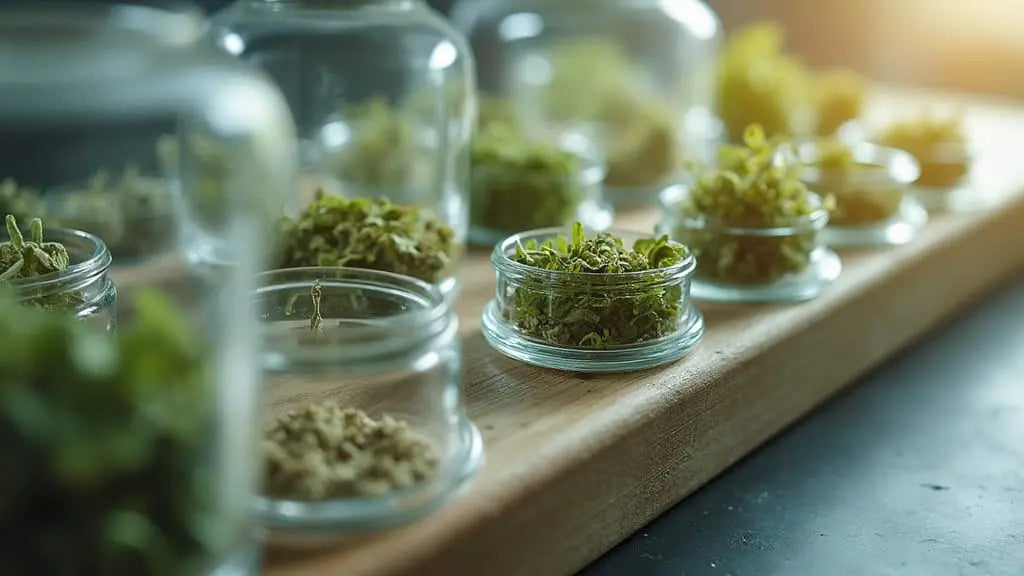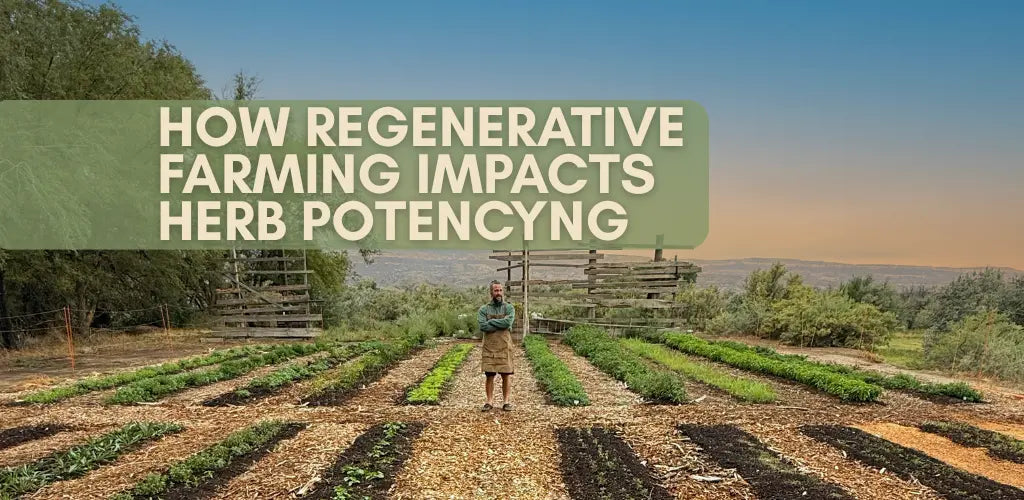Reishi vs Chaga: What’s Different, When to Use Each, and How to Prepare Them

Short answer: Reishi is an immune modulator with beta-glucans and triterpenes that suits stress-heavy periods and nighttime routines. Chaga is an antioxidant-forward tonic rich in a melanin complex and birch-derived compounds like betulin. They are not interchangeable. Choose the right form and preparation for the goal, and follow safety notes: rare liver signals have been reported with reishi, and chaga is high in oxalates, which is relevant for kidney stone risk. Authoritative sources are linked throughout.
Related reading on Sacred Plant Co: Reishi mushroom guide • Chaga feature • Reishi vs Astragalus • Sacred Mushrooms collection.
How they work: a short chemistry tour
Reishi (Ganoderma lucidum)
Fruiting bodies contain beta-glucans that prime innate and adaptive responses, plus triterpenes like ganoderic acids that help regulate inflammatory tone. Human evidence shows immune-marker changes and quality-of-life signals in small trials and reviews. Survival or disease-modifying claims are not supported as monotherapy. See balanced summaries from Memorial Sloan Kettering and Cochrane (MSKCC, Cochrane).
Chaga (Inonotus obliquus)
Chaga forms a hard sterile conk on birch. It contains polysaccharides, a melanin complex with strong antioxidant capacity, and triterpenes including inotodiol. Betulin and betulinic acid present in chaga are derived from the birch host. Human clinical data are limited; much of the excitement comes from preclinical work and traditional use. See MSKCC and recent reviews for scope and limits (MSKCC, review).
Evidence at a glance
| Criteria | Reishi | Chaga |
|---|---|---|
| Core actives | Beta-glucans, ganoderic triterpenes | Polysaccharides, melanin complex, inotodiol, birch-derived betulin |
| Best fit | Immune modulation with stress and sleep routines | Antioxidant-forward tonic in the well state, cold-weather decoction |
| Human evidence snapshot | Mixed; immune-marker and QoL signals in small trials and reviews (Cochrane) | Limited clinical data; strong preclinical antioxidant and immunologic literature (MSKCC) |
| Tea vs extract | Tea delivers beta-glucans. Dual-extracts concentrate triterpenes plus polysaccharides. | Long-simmer tea for polysaccharides. Dual-extracts pull additional triterpenes. |
| Key cautions | Rare liver injury signals reported. Review anticoagulants and immunotherapy (NIH LiverTox, MSKCC clinical note) | High oxalates. Caution with kidney stone history and kidney disease; case reports of oxalate nephropathy (case report, case report) |
Reishi in practice
Best uses: modulation under stress, a calming evening routine, and seasonal resilience. Many readers prefer fruiting-body extracts when the goal is measurable beta-glucans. Teas and powders can play supportive roles, especially when building a nightly ritual. See the reishi overview for balanced context (MSKCC).
How to prepare reishi
- Tea (decoction): 5 g broken pieces per 12 oz water. Bring to a light boil, then simmer 30 to 45 minutes with the lid partly on. Strain. Reuse pieces for a second, lighter simmer.
- Dual-extract basics: combine a water decoction with a separate alcohol extract to capture both polysaccharides and triterpenes. Choose reputable products or work with a qualified practitioner.
- Timing: many take reishi with evening tea as part of a wind-down routine.
Safety for reishi
- Rare liver injury signals have been described. Stop and seek care for dark urine, jaundice, unusual fatigue, pale stools, or right-upper-quadrant pain (NIH LiverTox).
- Discuss use with a clinician if taking anticoagulants or receiving immunotherapy. See the clinical note on mushroom supplements in oncology (MSKCC).
Chaga in practice
Best uses: antioxidant-forward daily tonic in the well state, a warming winter brew, and a long-simmer kitchen ritual. Many readers reuse chaga chunks for two simmer cycles to extend value. See MSKCC for a plain-language overview of what is known and unknown (MSKCC).
How to prepare chaga
- Tea (decoction): 10 g chunks or hand-ground chaga per 16 oz water. Bring to a low boil, then simmer gently 30 to 45 minutes with the lid partly on. Strain. Reuse the same material for a second 20 to 30 minute simmer.
- Dual-extract basics: a combined water and alcohol extraction concentrates multiple fractions, including triterpenes like inotodiol and birch-derived betulin.
- Flavor tips: cinnamon stick, orange peel, or a ginger slice adds warmth without masking chaga’s character.
Safety for chaga
- Chaga is high in oxalates. Case reports describe oxalate nephropathy and kidney injury with high intake over time (case report, case report).
- Discuss use with a clinician if there is kidney stone history, chronic kidney disease, or use of anticoagulants.
30-second chooser
- Need immune modulation with a calm evening routine → start with reishi.
- Want an antioxidant-forward tonic for cold months and no kidney stone history → consider chaga.
- On anticoagulants, immunosuppressants, or with kidney or liver history → seek clinician guidance first.
How to prepare: step-by-step
Reishi tea
- Use 5 g reishi pieces per 12 oz water.
- Bring to a light boil, then simmer 30 to 45 minutes with lid partly on.
- Strain and sip warm. Reuse pieces for a second lighter simmer.
Chaga tea
- Use 10 g chaga chunks or hand-ground chaga per 16 oz water.
- Bring to a low boil, then simmer 30 to 45 minutes.
- Strain and serve. Reuse for a second simmer of 20 to 30 minutes.
Quality, sustainability, and testing
- Identity: favor fruiting body for reishi and true chaga sclerotium from birch.
- Lab testing: request microbial, heavy-metal, and where relevant radionuclide screening. Confirm extraction disclosures, such as beta-glucan percent for reishi.
- Ethical sourcing: selective harvest and slow regrowth are critical for chaga. Choose suppliers who document harvest practices.
History and cultural roots
Reishi appears across East Asian materia medica as a symbol of longevity and composure. Chaga is embedded in boreal folk practice as a winter tonic prepared as a slow tea. Modern preparation and safety guardrails help place these traditions in today’s kitchen and clinic. For historical and clinical context see NIH PDQ and MSKCC (NIH PDQ, MSKCC reishi, MSKCC chaga).
FAQs
Can reishi and chaga be taken together?
Begin with one to judge benefit and tolerance. Combining later is reasonable for experienced users with professional guidance.
Is reishi better at night?
Many use reishi in the evening as part of a wind-down routine. Individual responses vary.
Does chaga contain caffeine?
No. Any perceived lift comes from its tonic profile rather than caffeine.
What’s the safest way to start?
Use a conservative tea routine for 2 to 4 weeks. Track sleep, energy, and any adverse effects, then continue only if helpful and well tolerated.
Who should avoid chaga?
Those with kidney stone history or chronic kidney disease should seek clinician guidance due to oxalates and case reports of kidney injury with high intake (report, report).
Is reishi safe for the liver?
Reishi has rare case reports of liver injury. Stop for dark urine, jaundice, unusual fatigue, pale stools, or right-upper-quadrant pain and seek medical care (NIH LiverTox).
Tea or extract?
Tea prioritizes water-soluble fractions like polysaccharides. Dual-extract products combine water and alcohol extractions for a broader profile.
How long until results are noticeable?
Reishi is often evaluated at 6 to 8 weeks. Chaga is often evaluated at 8 to 12 weeks because tonics work gradually.
Medical disclaimer
This article is for educational purposes only and is not medical advice. Products and methods described are not intended to diagnose, treat, cure, or prevent any disease. Always consult a qualified healthcare professional before using mushrooms or herbs, especially if you are pregnant, nursing, taking medications, or have a medical condition.
Sources








